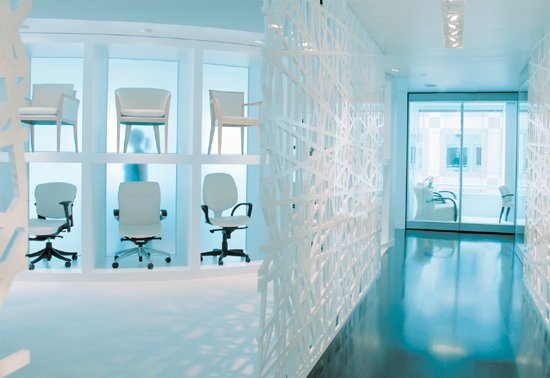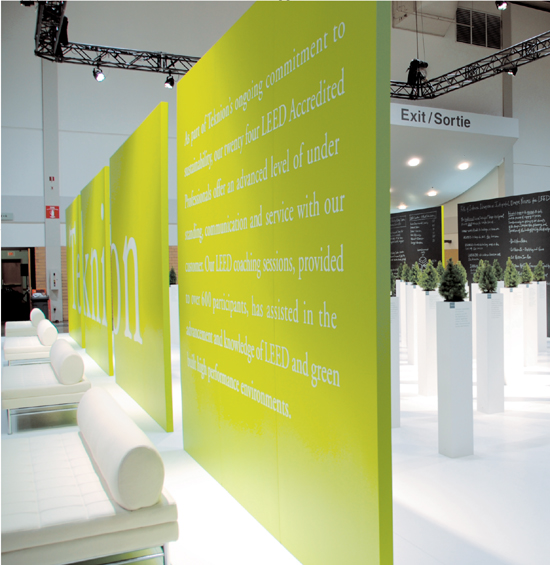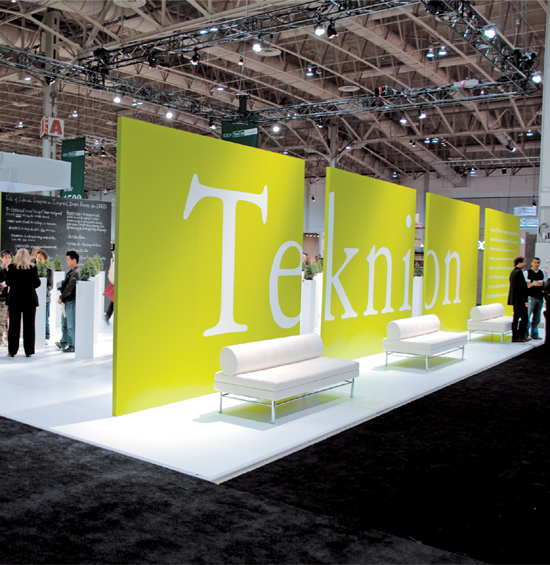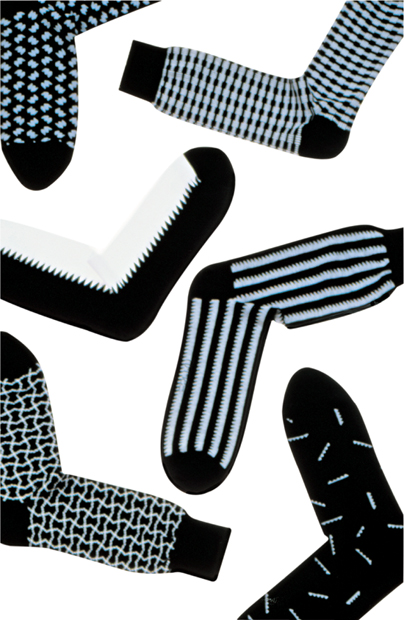I NEVER COME IN WITH A SOLUTION BEFORE I KNOW WHAT THE PROBLEM IS.
Being an instructor in a thesis class on graphic design, I’m always trying to instill in my students the idea that you let the problem solve itself. The issue with a designer is that you just have to listen to what the problem’s telling you, and it will more than likely explain how it should be solved.
We should try not to come with an answer before we get the problem. I try to listen to the problem, research it, look at the competition, look at the personality of the company, and then try to be inspired by it. I try to find out what is unique about the company and what I can find that is really different from the companies it competes against. We’ve all heard a designer who says, “I did this thing and I can’t wait to use it on my next client.” That’s something you’ll never hear from me.
In the end, designers are problem solvers. That’s what we do, and that’s what I usually have to teach my students: that you have to figure out what the problem is. You should not come in with a solution before you know what the problem is. The things that inspire me are the things that are helping me solve a particular problem.
I’m always pushing against the problem. I have a lot of respect for people like Stefan Sagmeister, who is an amazing visual generator. But I’m more like an architect. I have to have the size of the lot, the piece of land. I have to have the codes and the restrictions, and then I try to beat the codes and restrictions, to make it better. But as a designer, you can’t help but have a style. It’s your politics; it’s the side of the bed you got up on; it’s the way you process your thinking; it’s your personal taste. That’s all going to happen anyway, so the more you try not to perpetuate that, the better. I always need to do something that makes me just a little uncomfortable so that I’m thinking, is this right? Is this really cool, or is it not cool? I think that’s what makes me keep my edge, whereas if I know I have the answer every time, I think it’s time to hang it up. Every so often, if you push an idea to the point where you’re asking, “Is this okay?” I think you’re growing and you’re still learning as a designer.
I got into being a multidisciplinary designer around 1973, really before that word existed. I wanted to be an architect since I was in middle school. When I talked to my high school counselor my junior year, she told me I wasn’t smart enough to be an architect. I was also interested in graphic design, so I moved into graphic design, but I always had an interest in three-dimensional work. Then over the years, my company ended up doing signage, street furniture, and exhibits. I kept finding that doing an exhibit had a lot of the same properties as doing an interior, but it had the difficulty of everything having to fit into one 40-foot (12.2 m) van, and it had to be assembled by union guys and feel like a space.
Then one of my clients, a furniture client for whom I was doing all the branding and identity and even some products at that time, said they couldn’t afford an architect and they needed a showroom. So, I designed all the components off-site to be bolted into place, and it won an industry award for best showroom that year. It didn’t look like an exhibit—it looked like an actual space.
I have a lot of architect friends, and whenever I walk into a space with them they start talking about all the details, the fenestration—those aspects. When I walk into a space with graphic designers or communication designers, they talk about what the space feels like, how it functions, and what it says to them symbolically and emotionally. So, even though I do architectural projects I approach them as a designer, looking at what the space is saying. The products I design are based on that, too. Everything needs to look like it comes from the client it’s being designed for.
The first time I started designing products, it was with a small client that I’ve had for more than twenty years. As I do with a lot of my clients in the furniture business, I served as one of the members of the product review committees they put together. They were excited about three or four designs, and I said, “I don’t think these really work for you. No one is going to go to your catalogue to look for that product. It doesn’t seem to tie in with what your brand is and who your audience is. It just seems to be out of place.” I ended up designing a bunch of products for them. It all just started from there.

I designed a swivel chair that is a lounge chair similar to what you might find in a bar, as opposed to in a conference area, but it still has a business attitude to it. A whole series of simple tables go with it. They’re not based on a modern, radical idea, but the idea behind them addressed different needs.
I’ve noticed that at each company I worked for there wasn’t really one way to detail the product, because a lot of it is based on how it goes through their assembly line. I realized that if I could just say what the form is, and then have ideas of how it should be engineered, I could probably do pretty well. I still know how to do it and show where the bracing block should be and all that, but I realized that the form is what’s more important to them, and especially with the technology we have today, we can really push it a bit more.
It all starts from knowing the company’s image and the types of products that should come from the company. That’s what the clients expect: how to push their expectations a little bit more and get products that are more interesting.
An example is one of the furniture pieces I’m doing now. A company in Canada prototyped the chair, but because it is a systems company, it upholstered all three sides of the chair and then bolted all the sides together. An upholstery company would have done one giant sewn-together pattern that would have been pulled down over the top of the frame. Seeing all these different applications allows me to question the aesthetic of the chair and the identity it has in relationship to the company and the company’s customers.
For Esprit, I designed a two-tone sock that was black in the front and tan in the back so that when you are walking you’ll look like you have tan socks on from behind and black socks on from the front. The problem was that there was really no problem to solve, so I created my own problem of “coming and going” sock differentiation.
Teknion is a Canadian furniture company that we’ve worked with for years. Teknion did research with behavioral scientists, designers, and clients and came up with a proposition called Workplace One. This is a product that solves a need. I designed a product that fits the more casual conferencing idea, where lounge furniture usually was used in just the reception area, but now companies are using it in comfortable seating areas where people can sit around and brainstorm ideas; it breaks down the formality of being around a conference table.
Years ago, I worked for Esprit. They hired me to design their line of socks. I thought it would be great fun. But I found that although the first hour was really fun, after that it was like, get me out of here, because I wasn’t really solving any problems. My methodology of working is that I always need the problem to push against, to do what’s the most obvious, or do what’s not the most obvious.


 VANDERBYL DESIGN
VANDERBYL DESIGN


